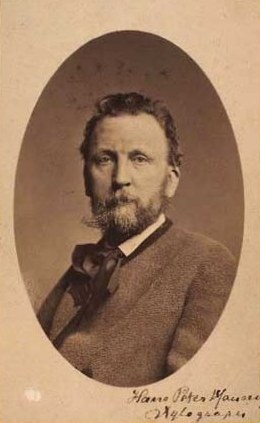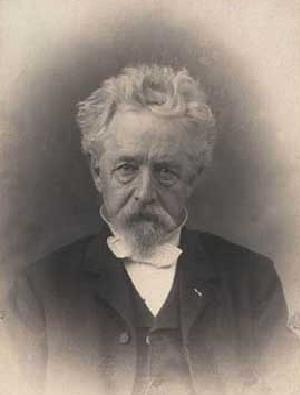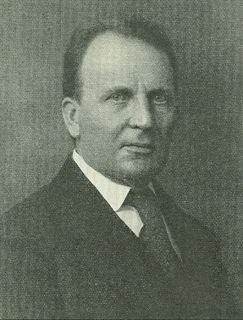
Peder Vilhelm Jensen-Klint was a Danish architect, designer, painter and architectural theorist, best known for designing Grundtvig's Church in Copenhagen, generally considered to be one of the most important Danish architectural works of the time. Its Expressionist style relies heavily on Scandinavian brick Gothic traditions.

Hans Peter Hansen was a Danish xylographer who specialized in portraits.

Martin Nyrop was a Danish architect.

Johan Cornelius Krieger (1683–1755) was a Danish architect and landscape architect, who from the 1720s served as both the country's chief architect, and head of the royal gardens.
Events from the year 1899 in Denmark.

Frederik Ferdinand Helsted was a Danish painter and drawing master.

Vilhelm Klein was a Danish architect who adopted the Historicist approach, frequently emulating the so-called Rosenborg style and the Italian Renaissance style.
Bülowsvej is a street in the Frederiksberg district of Copenhagen, Denmark. It runs from Gammel Kongevej in the south to Åboulevard in the north, linking Madvigs Allé with Brohusgade. The University of Copenhagen's Frederiksberg Campus dominates the west side of the street with its large main building from 1895. The east side of the street is home to one of Denmark's oldest neighbourhoods of single family detached homes.

Gimle is a former community centre in Frederiksberg, Denmark. The building on Grundtvigsvej 14 is now part of University of Copenhagen's Frederiksberg Campus.
Axel Johannes Salto was a Danish ceramic artist of international fame. His works also include painting, graphic design and illustrations for books, jewelry and textiles. As author and founder of the art magazine Klingen (1917–1919), Salto was also an important contributor to the art debate in Denmark.

Kittendorff & Aagaard, later Kittendorff & Aagaar & B. Olsen was a leading woodcut printer and photographic studio and publishing house based in Copenhagen, Denmark.
Vilhelm Heinrich Friederichsen was a Danish architect.

Hans Wright was a Danish architect. He served as city architect in Copenhagen from 1904 to 1925.

Peter Gottfred Ramm was a Danish military officer, landowner and local politician. He initiated the redevelopment of the Vodroffsgård estate in Frederiksberg, creating Danasvej and several of other new streets in the area. He founded Frederiksberg Iron Foundry and Machine Factory in 1896.

Carl Christian Lund was the leading Danish theatrical painter of his time.
Bianco Lunos Allé is a street in the Frederiksberg district of Copenhagen, Denmark. It runs from Gammel Kongevej in the south to a roundabout on Grundtvigsvej in the north.

Bianco Luno was a Danish book printer. His printing business, Bianco Lunos Bogtrykkeri, was at the time of his death in 1852 the largest company of its kind in Denmark. The street Bianco Lunos Allé in Frederiksberg is named after him.
Grundtvigsvej is a street in the Frederiksberg district of Copenhagen, Denmark. It runs from Bülowsvej in the east to Falkoner Allé in the west. Grundtvigsvej School, a public primary school, is located at No. 11.

Wilhelm Wanscer was a Danish paper merchant and art collector, remembered above all for his associations with the philosopher Søren Kirkegård and some of the leading Danish Golden Age artists. He was the father of surgeon Oscar Wanscher and industrialist Axel Wanscher, grandfather of art historian Vilhelm Wanscher and great-grandfather of the designer Ole Wanscher.

Ole Bang was a Danish medical doctor and professor at the University of Copenhagen. He was a co-founder of Rosenborg Brøndanstalt. He was the paternal grandfather of author Herman Bang.















